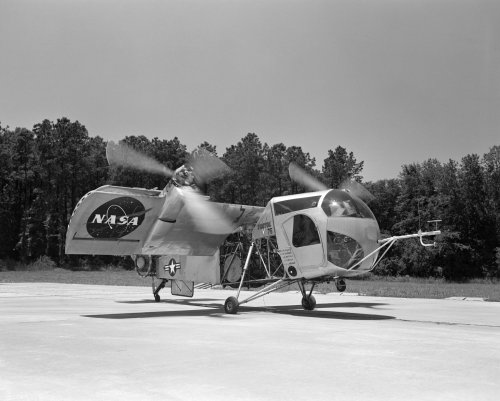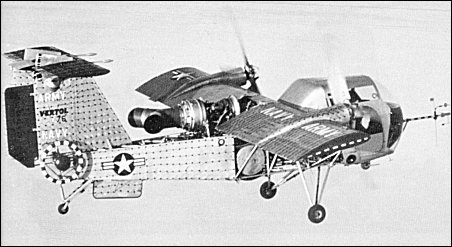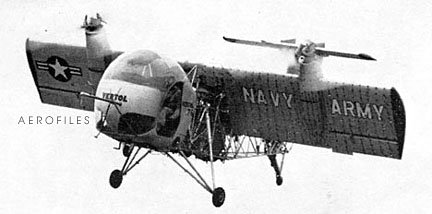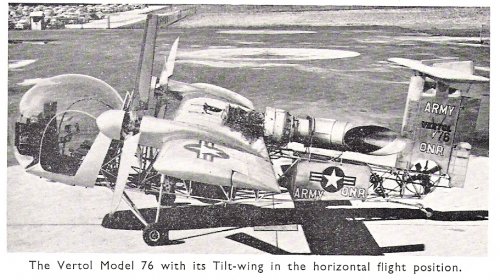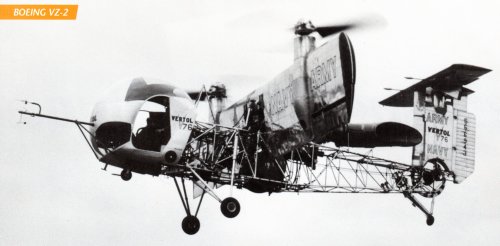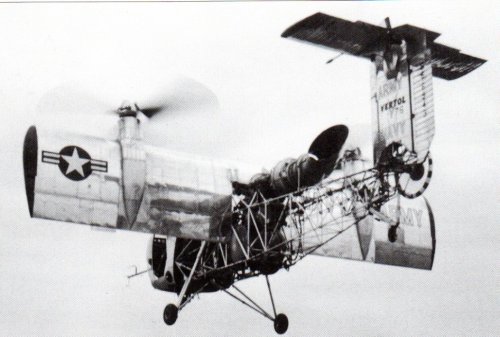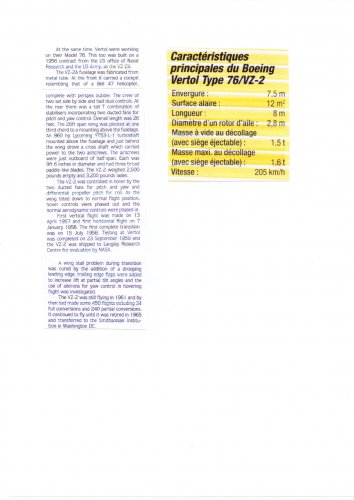- Joined
- 25 June 2009
- Messages
- 14,141
- Reaction score
- 4,332
The Vertol Model 76 certainly deserves more attention. This was one of the key VTOL research aircraft of the 1950s, helping NASA to gather a lot of data on tilt-wing configurations (a lot of which was put to good use later on in prototypes such as the XC-142 and CL-84).
During the mid-1950s the Army became particularly interested in the possible military applications of V/STOL aircraft, and consequently contracted with several aircraft manufacturers for the development of such vehicles. Among the many innovative designs to appear during this V/STOL era was Vertol's Model 76, the first aircraft in the world to make use of the tilt-wing concept. The single example produced (serial 56-6943) was funded jointly by the Army and the Office of Naval Research (ONR), and made its first hovering flight in the summer of 1957.
The first VZ-2 vertical flight took place in April 1957. On July 15, 1958, the first complete transition took place, demonstrating vertical take-off to cruise flight and then back to a vertical landing. The model also served as a great teaching tool, as many pilots were checked out in the unique bird. Once the military was completed with the VZ-2, the plane was turned over to NASA, where it continued to fly until 1965. In all, there were only 450 flights made by this unique craft, including 34 full conversions. In recognition for its many accomplishments, upon its retirement, the VZ-2A was given a place of honor at the rare bird alcove of the Smithsonian Institution.

Technical data for VZ-2A
Engine: Lycoming YT-53-L-1 rated at 630kW
Rotor diameter: 2.90m
Wingspan: 7.60m
Fuselage length: 8.05m
Height: 3.15m
Take-off weight: 1443kg
Empty weight: 1128kg
Online articles:
http://www.aviastar.org/helicopters_eng/bvertol_vz-2.php
Online photo gallery (NASA scale test model):
http://crgis.ndc.nasa.gov/historic/Additional_Photos_for_Free_Spinning_Tunnel#Model_142
Online video:
http://www.videolife.tk/video/e0rSvtRwtVA/Vertol-VZ-2.html
Related design (possibly Model 90):
http://www.aviastar.org/helicopters_eng/tiltrotor.html
During the mid-1950s the Army became particularly interested in the possible military applications of V/STOL aircraft, and consequently contracted with several aircraft manufacturers for the development of such vehicles. Among the many innovative designs to appear during this V/STOL era was Vertol's Model 76, the first aircraft in the world to make use of the tilt-wing concept. The single example produced (serial 56-6943) was funded jointly by the Army and the Office of Naval Research (ONR), and made its first hovering flight in the summer of 1957.
The first VZ-2 vertical flight took place in April 1957. On July 15, 1958, the first complete transition took place, demonstrating vertical take-off to cruise flight and then back to a vertical landing. The model also served as a great teaching tool, as many pilots were checked out in the unique bird. Once the military was completed with the VZ-2, the plane was turned over to NASA, where it continued to fly until 1965. In all, there were only 450 flights made by this unique craft, including 34 full conversions. In recognition for its many accomplishments, upon its retirement, the VZ-2A was given a place of honor at the rare bird alcove of the Smithsonian Institution.
Technical data for VZ-2A
Engine: Lycoming YT-53-L-1 rated at 630kW
Rotor diameter: 2.90m
Wingspan: 7.60m
Fuselage length: 8.05m
Height: 3.15m
Take-off weight: 1443kg
Empty weight: 1128kg
Online articles:
http://www.aviastar.org/helicopters_eng/bvertol_vz-2.php
Online photo gallery (NASA scale test model):
http://crgis.ndc.nasa.gov/historic/Additional_Photos_for_Free_Spinning_Tunnel#Model_142
Online video:
http://www.videolife.tk/video/e0rSvtRwtVA/Vertol-VZ-2.html
Related design (possibly Model 90):
http://www.aviastar.org/helicopters_eng/tiltrotor.html

